10 steps to a long career as a designer
Christopher Cashdollar's pro tips will get you thinking beyond the pixel and on a path towards long-term professional relevance.
You are on top of the world right now; great clients, amazing projects, and a well-honed portfolio. Yet, in the back of your mind a humbling question looms. Can I do this forever? Do I have another 30 to 40 years of this in me? Being relevant as a designer for the duration of an entire career is a daunting task.
Here's a humbling reality check. There will always be web designers more talented than you. Peruse sites like Cargo Collective, Coroflot, and Carbonmade at your own risk. While inspiring it's also incredibly easy to become disillusioned. The number of talented designers competing directly against you grows each year. New ones join the workforce every year. Just like you, all these designers are hungry for work.
Yet, there's a game-changing secret they don't yet know; design 'talent' can only advance your career so far. If you want to be more than just a flash in the pan, you need to diversify your skills and evolve beyond just slinging the hottest pixels. If longevity is an important aspect of your web design career, start preparing to expand your talents.
01. Learn your graphic design theory and history
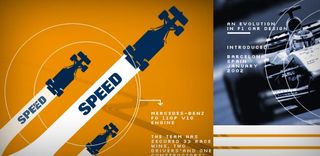
Start with the design basics. How can you expect to master an expertise if you don't know any of the fundamentals? Professional athletes understand. All sports training starts with grasping the core skills. Design proficiency isn't much different. To understand the principles of design is to decode how design works. Want to pull the strings in your audiences' brain? Learn the underlying patterns to the craft. If terms like 'repetition and variation', 'contrast', 'rhythm', 'balance' are foreign to you, it might be time to hit the books.
If you have a strong understanding of design history, you now have a mobile library of inspiration (i.e. your brain) to always draw from. Pull from this knowledge with purpose. Don't stumble through a historical design style without an understanding of how and why it originated.
When your art director tells you she wants to see Paul Rand mashed with The Designers Republic, you'll have a frame of reference. Your ability to understanding the AD's point-of-reference and solve their problem visually will ensure you will stay on the top of the list of their favourite designers to work with.
02. Generate ideas
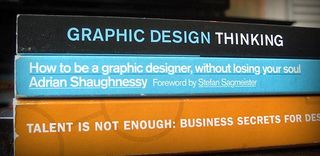
Need to create ideas? Don't stare at a blank computer screen. Successful designers learn how to generate concepts and avoid jumping into Photoshop too early.
Get the Creative Bloq Newsletter
Daily design news, reviews, how-tos and more, as picked by the editors.
First, articulate the design problem. Don't have a creative brief? Learn to write one. Provided a poor brief? Make it better. Don't be afraid to ask more questions to ensure you feel empowered to truly tackle the problem. Take ownership.
Once you are prepared, plan, moderate, or participate in a quantity-not-quality brainstorming session (designshack.co.uk/articles/inspiration/10-tips-for-effective-creative-brainstorming). Chop up a large challenge into smaller tasks. Sometimes, a 15-minute focused pow-wow will help beat a two hour session. Only after the session should any ideas end up on the cutting room floor.
For the ideas that survive, don't be afraid to sketch until a solution become clearer. Sketching doesn't have to be pretty, either. Some designers pour over theirs, meticulously solving every element on the page before moving to the screen. Others make them loose, rough, and fast. Regardless, test and tweak ideas quickly. Moving through a volume of ideas rapidly before settling on a desired solution will take your design in a favourable direction faster.
Need more techniques for your idea toolbox? I'd recommend Graphic Design Thinking: Beyond Brainstorming. Focused on real-life case studies, it showcases outcome based tactics that designers can employ to gather information and generate ideas to solve many different types of design problems.
03. Sell your work
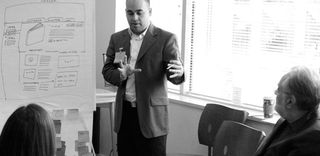
While 'coffee is for closers', the spoils of design successes go to those who can instill confidence in their clients. One-on-one with your smallest client or unveiling new work to a poker-faced 60-person committee, you must be prepared to establish trust in how you talk about design.
Become accustomed to talking not about the surface-level obvious, but the purpose in your work. Your design isn't 'clean', it's reducing the cognitive load allowing for the calls-to-action to provide clear pathways for the user. That typeface isn't used because it's cool. That typeface is the right typeface because it's historical context aligns with the content and is highly readable on screen.
If you can't talk elegantly about the work you create, you've left the door open for someone else to. Don't let that happen.
04. Become a better writer
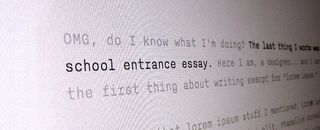
Virtual workplaces ensure we will be communicating more frequently in non-verbal situations. Until the full-body Star Wars holograms become reality, the words you write need to inform, persuade, and delight in your absence.
Writing is another form of creativity. The more you work the 'writing' muscle, the more you'll learn. Cennyd Bowles wrote a cracking blog post providing editing tips for designers. His insights can help less seasoned writers recognise the erroneous patterns in their writing. Be comfortable turning the jumbled mess of thoughts in your head into organised, written ideas. Your words become an extension of yourself, providing additional opportunities to share your ideas when you're not present.
05. Surround yourself with people more talented than yourself
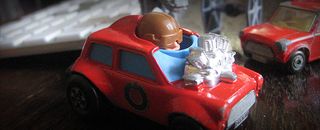
"When you get the chance, surround yourself with talented people, even if they're your 'competition.' You'll learn more from them than you'll learn from 20 years of schooling."
Heather Shaw, web designer, California
Can you learn in a vacuum? You can't. If you don't work with talented people that you can constantly learn from, think about changing jobs.
If you are lucky enough to be surrounded by elite designers, watch their habits. Study their processes. Your rate of growth as a designer will accelerate. You'll be able to witness how successful designers do what they do. No book or interview or online tutorial will ever be able to replicate that.
06. Work alone/work as a team
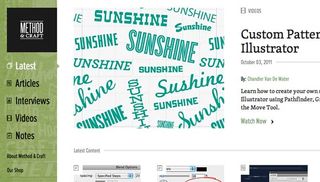
When you are on a team, can you successfully integrate with the personalities and talents of the team? If you are a freelancer, can you manage yourself and your projects despite wearing all the hats? Being adequately prepared for both is an utopian situation. Very few of us have that type of discipline built-in. Take small steps towards being prepared for both scenarios.
The best preparation is to delve into projects outside of your 9-to-5. If you work inside of a team, bring something to life on your own. A great example is what Phil Coffman concepted and executed with Method & Craft. If you already work solo, join forces with some like-minded professionals to bring something to life. Look into local coworking spaces or professional organisations where talented folks fraternise and collaborate. New to working with a team? Learn to let go of control. If you can learn to trust your teammates and earn that trust back, you'll forge a strong professional bond.
07. Handle conflict professionally

This industry begins to feel 'small' after only a few years. It's incredibly important to perform your craft virtuously. What type of reputation do you want to project to your contemporaries? Employers, co-workers, colleagues, and clients; all of these roles in your professional life aren't necessary one-time cameos. You will cross paths with them again. If not, your interpersonal skills will act as your proxy. People talk, reputation spreads and if you make a habit of burning bridges, it will come back to haunt you.
You'll meet people who you won't see eye to eye with. They might be your boss or your client. You might even manage one. As hard as it might be, treat all of these people with respect. The best way to do this? Be honest with them. Let them know that you disagree with either their actions or intentions... but never disrespect the person. Business should remain business. When you are doing it right, business should never be personal. Even when you might be the one being disrespected.
08. Accept that you have limits
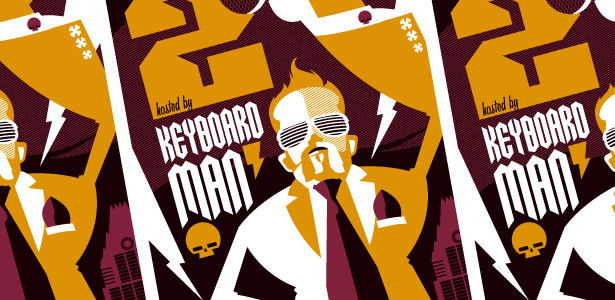
Yes, you used to draw when you were a kid. Does that make you the best candidate to create an illustration for a paying client? Who doesn't like to take snaps with our iPhones and turn them into nostalgic bits of memory via Instagram? Software doesn't make you a master of lighting photography. Know that there are skilled people out there with specific expertise. Thankfully, these talented laborers want to work with designers just like you! Seek out these talented people. Create a bucket-list of all inspiring folks that you must work with before you say sayonara to your 9-5.
Copywriter and creative director. Photographer and art director. Illustrator and designer. Together, each pairing strengthens the work. Different talents can combine to create something that is greater than the sum of its parts. These two (or three or four) talents can push each other to achieve new levels of creativity in their work. For SXSW Cogaoke 2, the Happy Cog design team reached out to a local illustrator we respected. A few emails later, we were collaborating on the new site and poster for the event.
09. Value making relationships, not just connections

You'll never know when the next job or job opportunity will show up in your inbox. The spoils come to those who take the time to nurture their network. That includes past coworkers, friends you've made at conferences, and the multitude of designers who inspire you. Reach out to those you admire. It's not dubious if you have an honest interest in the work someone is doing. If you are in this game to collect business cards, your intentions will show. Someone won't have a beer with you and talk shop? Spend your time and energy elsewhere.
10. Be forever curious
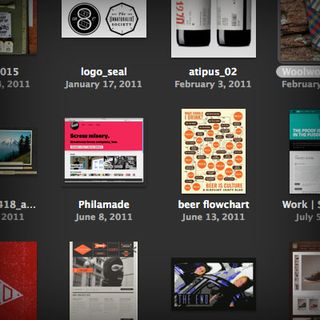
"Whenever possible, practice new techniques, try new tools, take risks, push the envelope - this forces you to challenge your creativity, combats stagnation and can help keep you relevant."
Lawrence O'Toole, graphic designer, NYC
You've been blessed with the ability to create for a living. Have you taken a look at what type of creator you are? Avoid being the 'hunter-gather' type, scurrying for inspiration in every new project. Instead, think like an agrarian; cultivating and honing your talent and influences over time.
Your design-garden should reflect your interests. I use LittleSnapper to organise the digital bits that catch my eye. In my collection you'll find print, photography, fashion, numerous web design patterns. Spend a few moments tagging and organising these snaps and over time you'll amass a respectable representation of where your tastes lie. If nothing else, you'll have a fantastic reference library that will be curated to your interests.
If you'd prefer something more tactile, start an analog collection. In Aaron Draplin's studio you'll find a personalised horde of industrial metal plates and long-forgotten packaging that reflect his commitment to fueling the muse that speaks to him. Want to find your muse? Look up the local flea market and go on a graphic design scavenger hunt.
Conclusion
"Find out about the world. Read interesting books and magazines, watch intelligent films, listen to music by people who play their own instruments and sing their own songs, travel to countries with a different culture to yours and have as many meaningful conversations as you possibly can."
Espen Brunborg, designer, United Kingdom
A career is like a slab of marble waiting to be turned into a piece of artwork. Like Michaelangeo, who could see the form inside of the unblemished stone, you can begin to shape your career in the vision of your choosing. It takes thousands of infinitesimal decisions. Those small choices compile to alter the course of your professional trajectory.
Have faith that while possessing oodles of talent is important, there are other valuable skills necessary in our industry. Live life. Take risks. When shaping your 'career-sculpture', remember that well-rounded design prowess will take you further down that path.
Words: Christopher Cashdollar
Christopher Cashdollar is creative director for Happy Cog.

Thank you for reading 5 articles this month* Join now for unlimited access
Enjoy your first month for just £1 / $1 / €1
*Read 5 free articles per month without a subscription

Join now for unlimited access
Try first month for just £1 / $1 / €1
The Creative Bloq team is made up of a group of design fans, and has changed and evolved since Creative Bloq began back in 2012. The current website team consists of eight full-time members of staff: Editor Georgia Coggan, Deputy Editor Rosie Hilder, Ecommerce Editor Beren Neale, Senior News Editor Daniel Piper, Editor, Digital Art and 3D Ian Dean, Tech Reviews Editor Erlingur Einarsson and Ecommerce Writer Beth Nicholls and Staff Writer Natalie Fear, as well as a roster of freelancers from around the world. The 3D World and ImagineFX magazine teams also pitch in, ensuring that content from 3D World and ImagineFX is represented on Creative Bloq.
